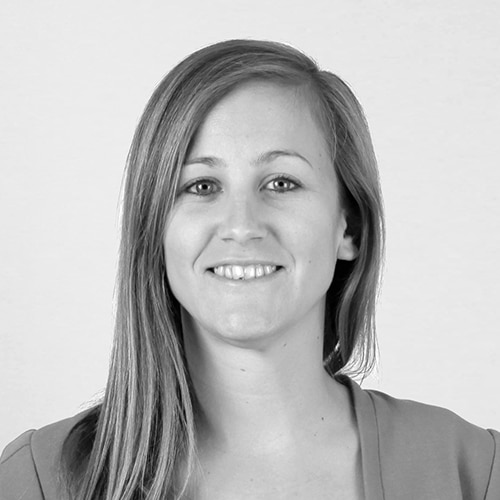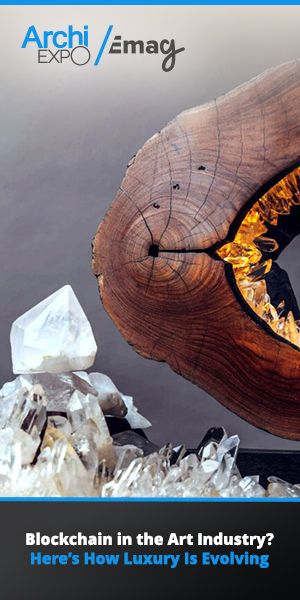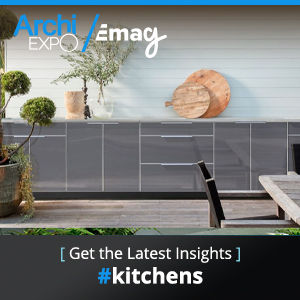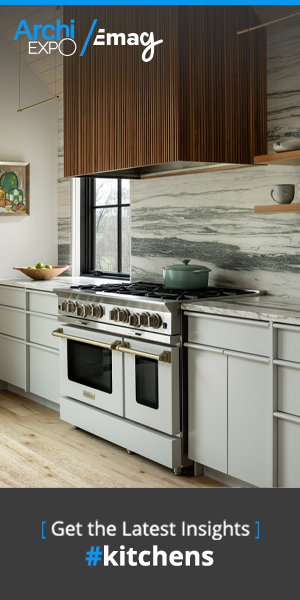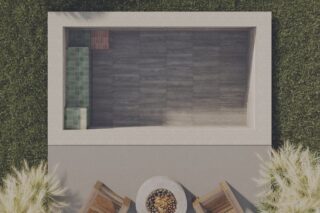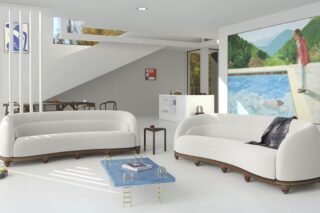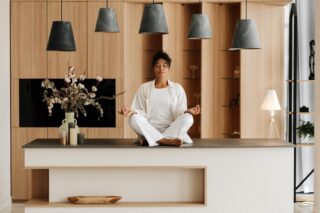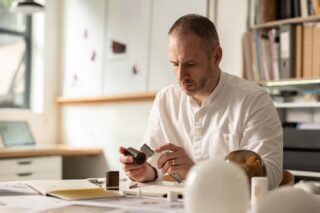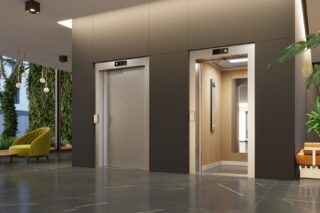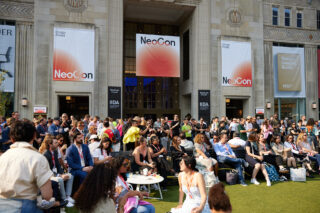In January 2023, Kristof De Bock and Sabine Victor officially launched their new lighting brand Dasein, a term based on philosopher Martin Heidegger’s Da-Sein: Being There. While the brand focuses on lighting, it also produces furniture.
Kristof De Bock spent twenty years constructing stands for product design brands such as Dôme Deco at fairs including Maison&Objet; he also worked on temporary exhibitions in high-end museums like the Louvre. Although he graduated with a degree in interior architecture, he veered away from “office” work, where he’d be sitting most of the day, drawing or working behind a computer screen, to a life of building with his hands. The years brought interesting encounters with architects and designers, leading Kristof to rethink his creative side. In 2018, he returned to the design of a floor lamp he’d completed during his studies. After 15 prototypes and testing many materials, he reached a final version of his floor lamp called Monday. Last year, he joined forces with Sabine Victor, sales director, and they launched the brand Dasein in January 2023.
“The floor lamp is called Monday because it’s the first design [by Dasein]; we initiated our portfolio with a lighting product because, on the first day, He created light,” Kristof De Bock said in a phone interview with ArchiExpo e-Magazine. “Our brand name Dasein projects time onto the product: Da-Sein, in German, means being there, at that point. All our products have a time-relation name.”
“Monday is also the first product I ever designed. Of course, I’d only designed it technically, not aesthetically. I thought I did something good with this lamp so why not try to make it more aesthetic?”
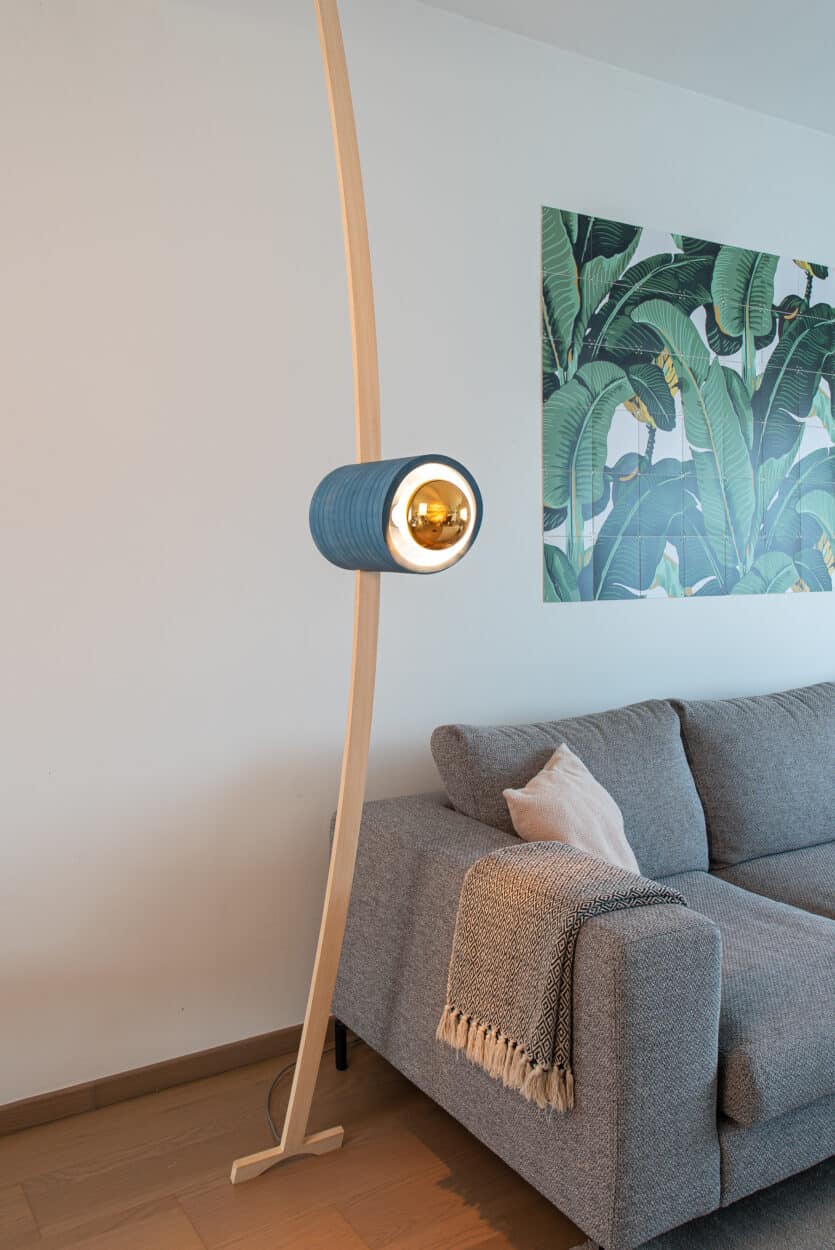
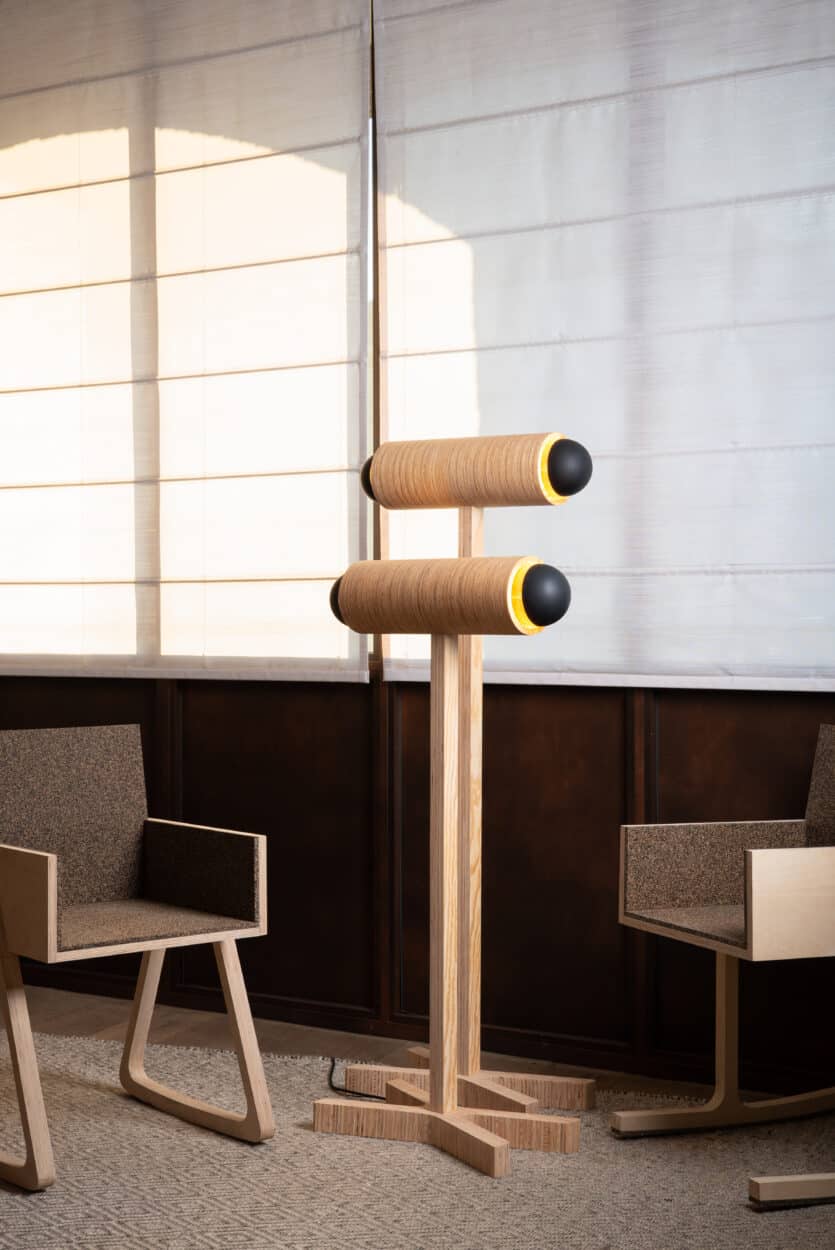
Twenty years later, the lamp stands proudly as the brand’s first-ever product. Since Monday, the designer has conceived and produced other lighting products as well as furniture pieces. His experience in construction provided him with knowledge of materials that has been useful, such as plywood but also a special rubber-cork material he used in the Per Diem chair. A local manufacturer takes recycled rubber and cork to make this material and, coinciding with the brand’s focus on sustainable and renewable resources, the designer only considers using local suppliers.
“We have a lot of cork and rubber from tires. We can put some extra energy into it and reuse it or we can burn and bury it. It’s better to renew and to use it again and again,” he said.
“In our products with the colored materials, we used a kind of plate material. Waste particles of wood are pressed together into strong plates. We see it as a good alternative compared to new materials,” Sabine Victor said.
“It’s important for us to use renewable materials but it’s not mandatory,” the designer added. “[The rubber-cork material] has been available for decades, used in construction for building houses, for facades. People have only been using it in this way but it’s a nice material so we integrated it into objects.
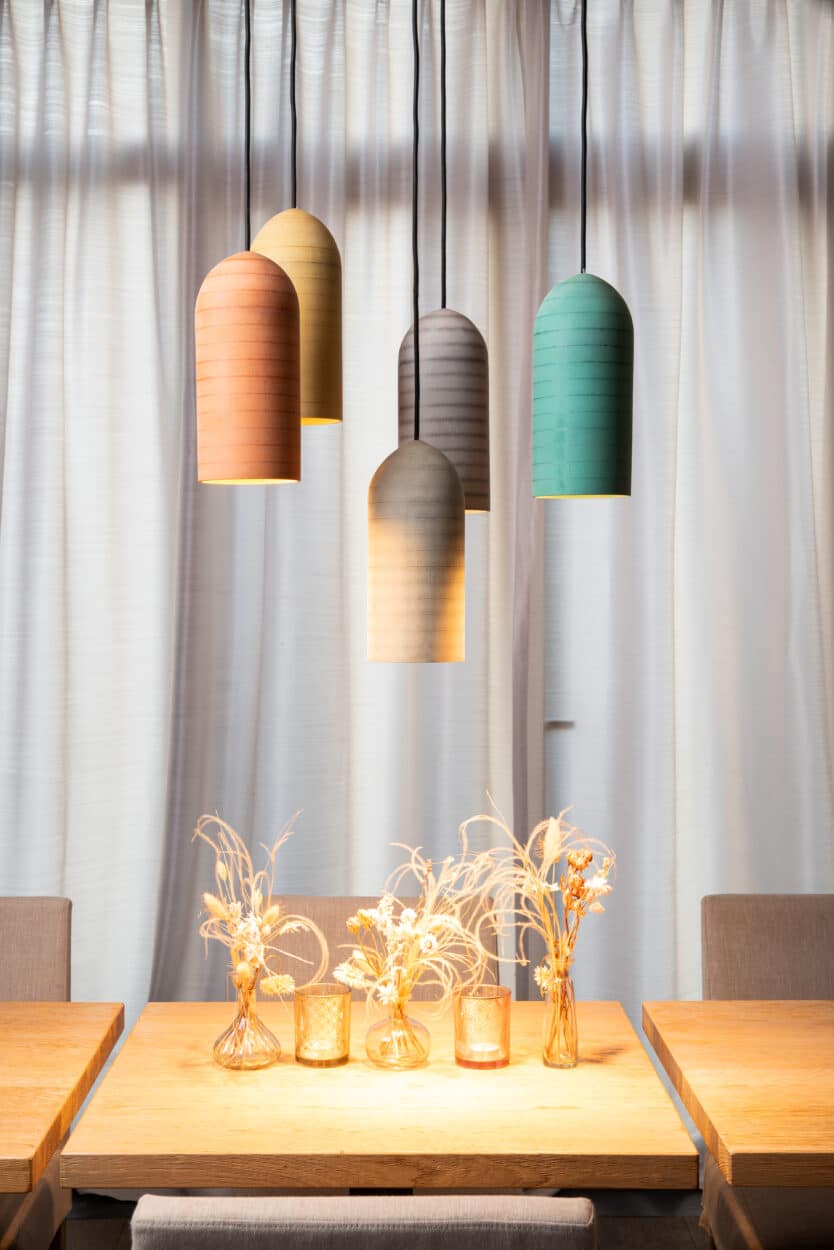
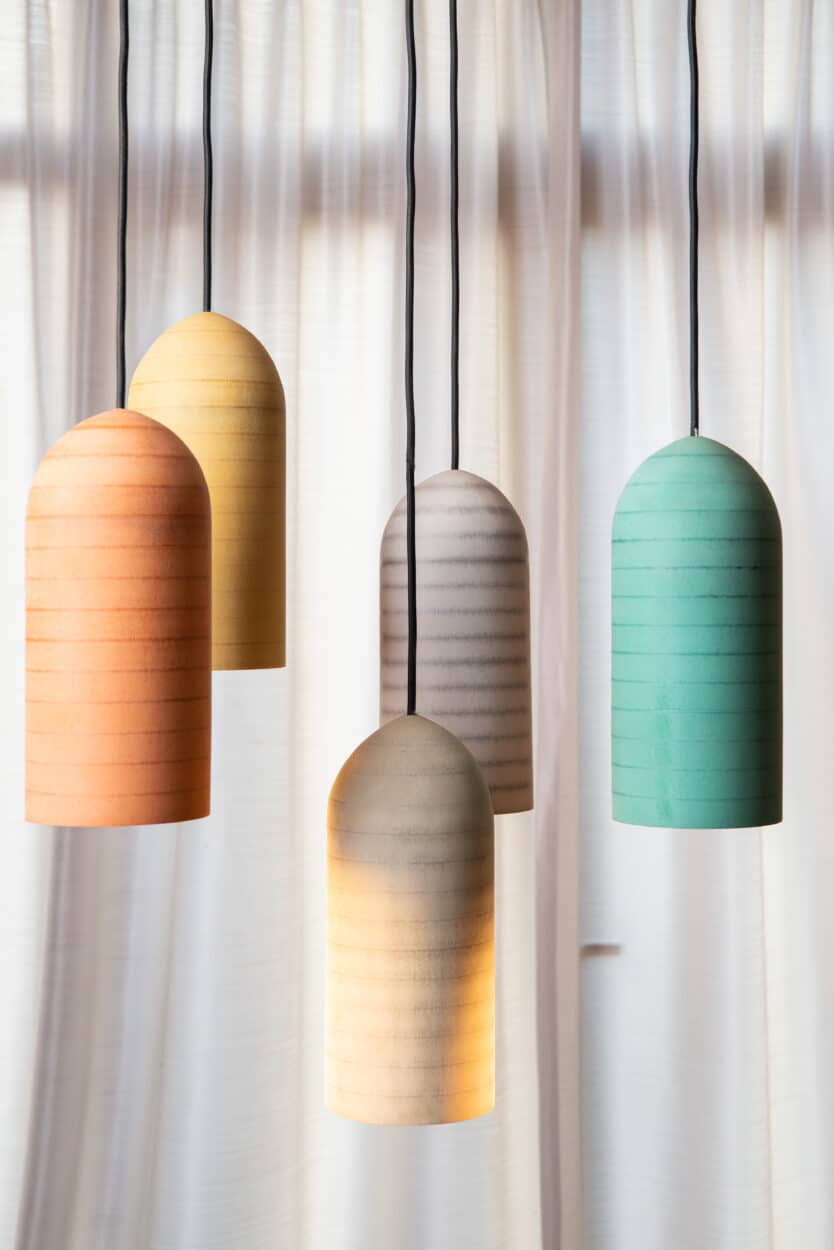
In line with renewable materials, lighting accounts for quite a discussion on energy efficiency. LEDs have provided the industry with an opportunity to lower our energy consumption, but designers can solve this problem more by considering the production of the lighting products they conceive. By selecting local manufacturers that use locally sourced materials, new or recycled, designers participate in the quest for energy savings.
“When it comes to energy savings, everything we make is designed and produced locally in Belgium. No part of the process is produced outside of Belgium. We’re a startup so we don’t have any data but as we grow, we’ll find partners to maintain our eco-designs,” Sabine Victor said.
One of the biggest challenges of the design industry, according to Kristof De Bock, is our society’s consumerism mentality. Companies have had the objective of creating a new product to present at the trade fairs they attend, surely in response to consumers’ need for the latest object. Maison&Objet occurs twice a year, for example, so brands that attend both events often prepare new products or new variations to existing products for the different dates.
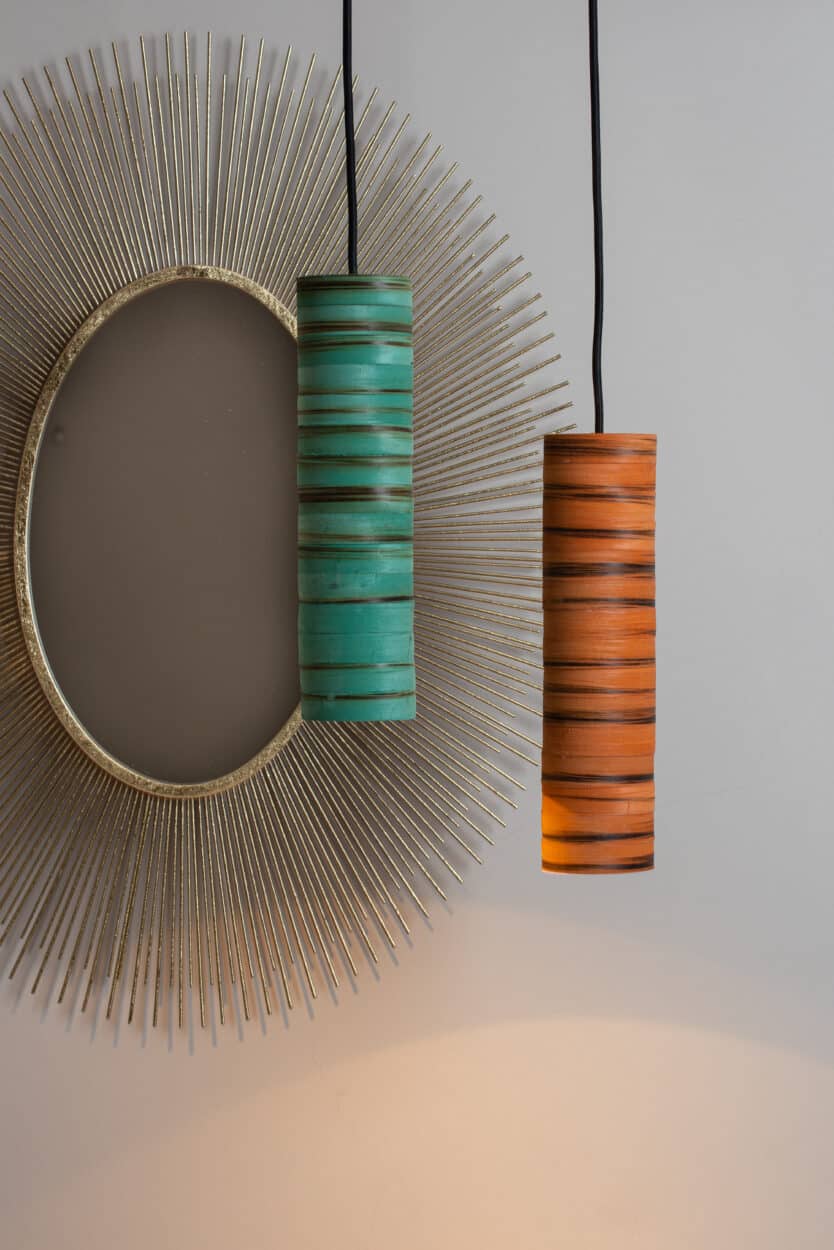
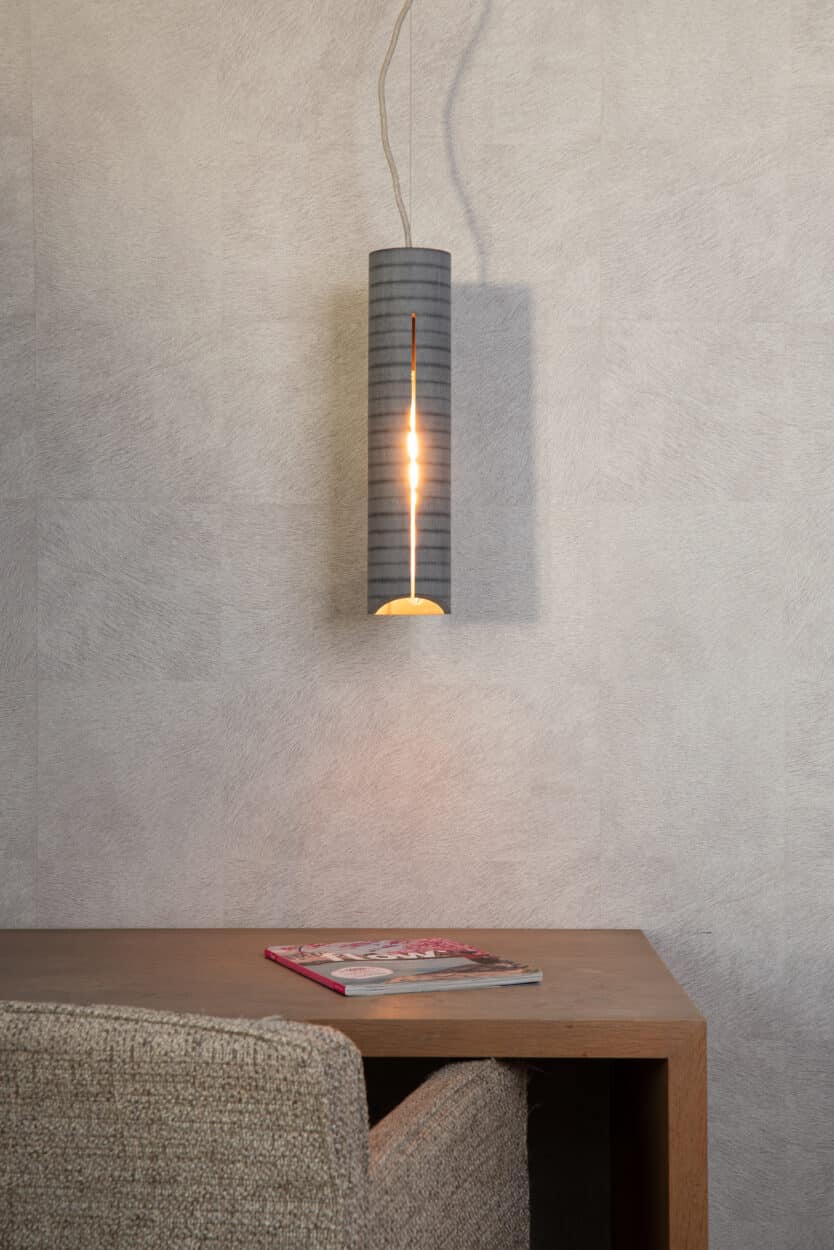
“When I was young, we’d purchase an object and keep it for the rest of our lives. People were proud of that and this is the idea we’re after with our brand,” Kristof De Bock said. “We visited several retailers recently and they’re interested in selling local products.”
Similarly, online shopping has disconnected consumers from the environment. Local shops such as grocery stores have become hubs for package deliveries, often cluttered at the entrance with piles and piles of boxes. Although the numbers for online shopping continue to increase, the interest in local goods has also risen to the point where Google offers a detailed description to companies on how to provide customers with information on their locally produced products. While online shopping has become a compelling avenue for purchases, despite an evident environmental impact, certain statistics show a high demand for local products. Still, seeing an object in a photo online isn’t the same as seeing it in person.
“You have to see it, to feel it. Some people see the photos and say, ‘it’s nice’, but when they feel the material, they feel how smooth it is.”
As online purchases and interest in local products increase simultaneously, we’re curious to see the next shift in consumerism and how the design industry will evolve in accordance with this change.

